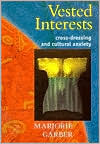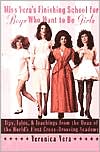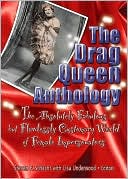Vested Interests: Cross-Dressing & Cultural Anxiety
Beginning with the bold claim, "There can be no culture without the transvestite," Marjorie Garber explores the nature and significance of cross-dressing and of the West's recurring fascination with it. Rich in anecdote and insight, Vested Interests offers a provocative and entertaining view of our ongoing obsession with dressing up—and with the power of clothes.
Search in google:
Beginning with the bold claim, "There can be no culture without the transvestite," Marjorie Garber explores the nature and significance of cross-dressing and of the West's recurring fascination with it.Vested Interests is a tour de force of cultural criticism: its investigations range across history, literature, film, photography, and popular and mass culture, from Shakespeare to Mark Twain, from Oscar Wilde to Peter Pan, from transsexual surgery and transvestite "sororities" to Madonna, Flip Wilson, Rudolph Valentino and Elvis Presley. What, Garber asks, does clothing have to do with sexuality? How do dress codes contribute to the organization of society? How is passing as a man or a woman related to racial passing? Is transvestitism a sign of homosexuality? What are the politics of drag? Why are cross-dressing rituals so commonly a part of the male power elite? How do transvestites appear--and disappear--in detective fiction? Is religious costume a kind of cross-dressing? Why is Peter Pan played by a woman?The books fifteen chapters include "Cross-Dressing for Success," "Fetish Envy," The Chic of Araby," "Phantoms of the Opera," "Black and White TV" (on transvestitism in African-American literature and culture), Spare Parts" (on transsexual surgery, the surgical construction of gender) and "Red Riding Hood and the Wolf in Bed."Rich in anecdote and insight, Vested Interests offers a provocative and entertaining view of our ongoing obsession with dressing up--and with the power of clothes. Publishers Weekly From the ``transvestite theatre'' of Shakespearean England and Japan's kabuki to Peter Pan, Boy George and female Elvis impersonators, cross-dressing is a pervasive social phenomenon, claims Garber, director of Harvard's Center of Literary and Cultural Studies. She states that ``there can be no culture without the transvestite,'' who, she argues, calls attention to cultural, social or aesthetic dissonances. The weight of her thesis is carried by such figures as Liberace, Divine, Oscar Wilde and David Bowie, yet her witty, consistently provocative study demonstrates effectively how cross-dressing is wrapped up with recognition of the power of women, androgyny, responses to gay identity and anxiety over economic or cultural dislocations. Garber also looks at transsexuals, drag performances, plays and movies. Photos. (Dec.)
\ Publishers Weekly - Publisher's Weekly\ From the ``transvestite theatre'' of Shakespearean England and Japan's kabuki to Peter Pan, Boy George and female Elvis impersonators, cross-dressing is a pervasive social phenomenon, claims Garber, director of Harvard's Center of Literary and Cultural Studies. She states that ``there can be no culture without the transvestite,'' who, she argues, calls attention to cultural, social or aesthetic dissonances. The weight of her thesis is carried by such figures as Liberace, Divine, Oscar Wilde and David Bowie, yet her witty, consistently provocative study demonstrates effectively how cross-dressing is wrapped up with recognition of the power of women, androgyny, responses to gay identity and anxiety over economic or cultural dislocations. Garber also looks at transsexuals, drag performances, plays and movies. Photos. (Dec.)\ \ \ \ \ Library JournalDo clothes really make the man? What do Elvis and Liberace have in common? Why is Peter Pan always played by a woman? These are just a few of the questions of sexual and sartorial politics raised by Garber. From the sumptuary laws of medieval Europe to ``vogueing'' in New York City in 1991, she traces Western society's inconsistent and often arbitrary views regarding the clothes we wear and how they affect class structure, gender stereotyping, and our own self-image. Garber boldly asserts that transvestism makes culture possible by deliberately confusing the constructs of gender identification and challenging the social control they seek to maintain. Well documented and thoroughly researched, Garber's book is a serious work that is not without a piquant feel for the ironic, especially as she details the lengths to which both men and women have gone to hide their gender in order to get ahead in the world. Often raising more questions than it answers, this is nevertheless a fascinating book about an equally fascinating subject. Highly recommended.-- Jeffrey Ingram, New port P.L., Ore.\ \








